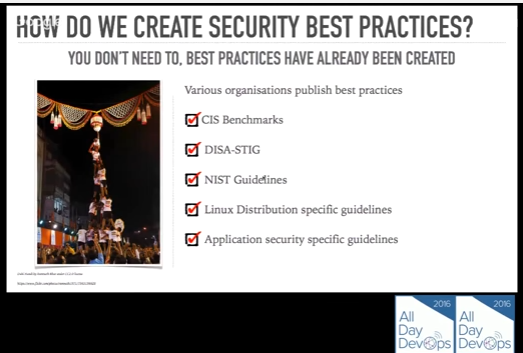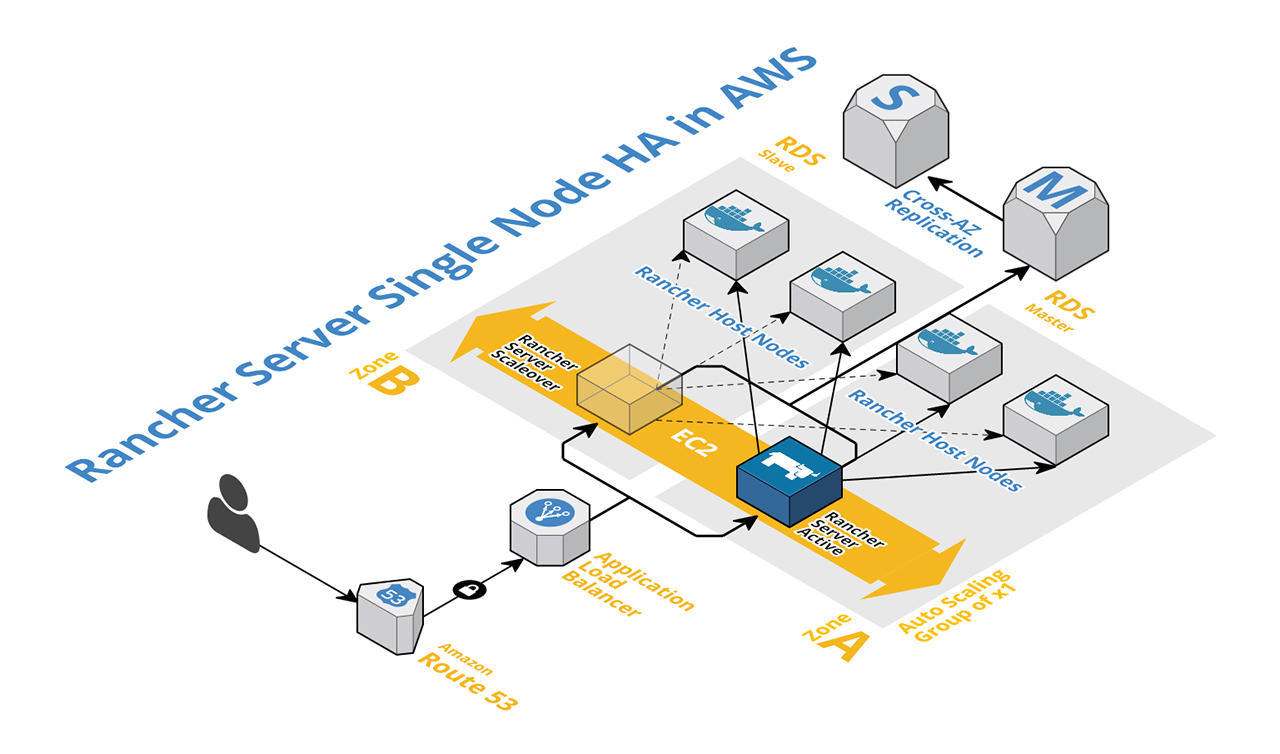This post was written by Jovile Bartkeviciute.

Tuesday saw the first of its kind, All Day DevOps global online conference and it went great! Many interesting stories, many demos, useful tips and tricks and a lot of food for thought. One of the organisers Mark Miller mentioned that the aim was to make sure that the viewers could walk away with something tangible and certainly, they can add a checkmark next to this on their list.
Starting at 9:00 AM (BST) and finishing at 1:20 AM (BST), it had 15 hours of sessions (54 in total!) with 3 tracks running simultaneously. The viewers were encouraged to vote with their feet and move from one track to another to choose the most interesting session for them at any time, or even have multiple sessions open at the same time.
There were some screening parties happening all over the world, and while the organisers initially expected around 1,000 of viewers, by the end of the day there were over 13,000 people registered!
The conference was divided into 3 blocks with 3 keynotes, oriented at people in different locations:
Europe, Middle East and Africa – Mark Burgess – Banks, Brains, Factories: Thinking in Promises for a Future World
East Cost – John Willis (Docker) – Turning Human Capital into High Performance Organizations
West Cost – Chris Morgan (RedHat) – No Shipping Fee: Traveling with Containers on Your DevOps Journey
There were 3 tracks that run simultaneously:
Track One: Modern Infrastructure – Yes You Can
Track Two: DevSecOps & Automated Security – Living the Dream
Track Three: CI/CD – Continuous Everything
Here are my notes from the sessions that I managed to catch:
EMEA Keynote: Mark Burgess – Banks, Brains, Factories: Thinking in Promises for a Future World

Notes:
- Shift from individualism to collectivism – it is something we need to learn from history and adopt in IT.
- The reason we repay the debts, is because it builds trust.
- We may scale away our existence as human beings.
- Is growth for its own use useful, or it is just a cancer? What are we going to do with our life when we will not need to work?
- Our individuality cannot be scaled – the one thing that we cannot scale in economy.
Some quotes:
- “We serve the economy instead of economy serving us.”
- “The way we manage economy today is a pyramid scheme.”
To read list:
Link to the recording of the talk: http://www.alldaydevops.com/tracks/
East Coast Keynote: John Willis – Turning Human Capital into High Performance Organizations

Notes:
- How would you describe DevOps to a CEO? You have 10 minutes.
- Set of practices and patterns that turn human capital into high performance organisational capital.
- From recent IT performance data (2015 State of DevOps Report) – high performing companies compared to their peers – 2555x faster lead times.
- Organisational culture was one of the strongest predictors of both IT performance and the overall performance of the organisation.
- Human error is a symptom of trouble deeper inside a system.
Quote:
- “DevOps is three-legged stool made of “Lean”, “Safety Culture” and “Learning Organisation”.
To read list:
Slides:
Link to the recording of the talk: http://www.alldaydevops.com/tracks/
West Coast Keynote: Chris Morgan – No Shipping Fee: Traveling with Containers on Your DevOps Journey

Notes:
- DevOps adoption rate – 74% (2016)
- Applications require complicated installation and integration every time they are deployed leading to: slow service delivery, reduced sercive quality, frequent down times, thus people would generally avoid deploying often in the past.
- Definition of what a container is depends on who you ask. There are two sides: infrastructure point of view and applications point of view
- DevOps with containers: container adoption rate in production – only 18%.
- Container itself is not enough – it enabled DevOps, but requires a total solution to develop, deliver and manage container-based applications at scale.
Some Quotes:
- “You do not want the technology to dictate the process”.
Link to the recording of the talk: http://www.alldaydevops.com/tracks/
Akash Mahajan – System Hardening Using Ansible

Notes:
- How do we secure applications? By automating security hardening and thus removing human error.
- Security hardening is a process where we identify insecure default configuration present on a system and apply changes that will change the configuration to secure variable.
- Ansible is made for security automation.
- Structured manuals (playbooks) + GIT = = WIN
- We do not need to create security practices, the best ones have already been created – all you need to do is write an Ansible playbook.
Quote:
- “Appsec – modern methods and processes securing legacy stuff – modern fences with gates and big doors, when sometimes the keys are shared.”
To read list:
Slides:
Link to the recording of the talk: http://www.alldaydevops.com/tracks/
Fabian Lim – Prepare to Defend Thyself with Blue/Green

Notes:
- Blue/green demo!
- How does blue/green defend the stack?
- Minimise downtime,
- Preserved last known deployment
- Robust infrastructure
- Parallel pipelines.
- Not every layer requires blue/green – you need to identify where it is relevant
Quote:
- “Why stop at blue/green? Go rainbow!”
- “It’s not magic ! It is talent and sweat.
Slides: https://docs.google.com/presentation/d/1_eUxfQGMsCLLcMdb1vBbr2mYhQ_bCiySTRrT12Lr1PA/edit?usp=sharing
Link to the recording of the talk: http://www.alldaydevops.com/tracks/
Nathen Harvey – Modern Infrastructure Automation

Notes:
- Every business is becoming a software business
- Code is a continual experiment – we are always be refracturing/we will always be changing it
- Code review is essential – at least 4 eyes need to look at code before deploying it.
- Infrastructure as code:
- Programmatically provision and configure component
- Treat like any other code base
- Reconstruct business from code repository, data backup and compute resources
- Start documenting the “why” of the code change.
- Your culture reinforces your technology choices and the opposite – they are not independent.
Quote:
- “We are the future of infrastructure”
Slides:
Link to the recording of the talk: http://www.alldaydevops.com/tracks/
James Wicket – Serverless and the Way Forward!

Notes:
- Serverless application using AWS Lambda demo!
- What serverless really is? Functions as a service, no management of servers, opinionated framework for compute
- Serverless encourages functions as deploy units, couples with third party services that allow running end-to-end applications without worrying about system operations.
- Serverless security is easier and harder. Four key areas to think about:
- Software supply chain security
- Delivery Pipeline Security
- Data Flow Security
- Attack Detection
Quote:
- “Serverless will be to containers what the cloud was to virtualisation”
Link to the recording of the talk: http://www.alldaydevops.com/tracks/
Sumit Agarwal – Devops: Culture, Tools or Role

Notes:
- DevOps culture:
- Collaboration & Open Communication
- Shared responsibility (Devs on call)
- Continuous learning (Devs on call)
- Continuous learning (Blameless Postmortems)
- Empathy
- Lean
- Continuous Improvement
- Measure what you want to change.
- Take the concept of lean and divide your project into smallest possible deliverable
- You need to consider operations as the most important users, the functional stuff wouldn’t be worth much if they can’t be run in production effectively.
- (devopstopologies.com and our co-founder Matthew Skelton were mentioned too!)
Quote:
- “Just because you use Jenkins, it does not mean that you do continuous integration.”
Link to the recording of the talk: http://www.alldaydevops.com/tracks/
Jayne Groll – Continuous Everyone – Engaging People across the Deployment Pipeline

Notes:
- Culture eats strategy for breakfast.
- Westeros (!!!) of a business – all want to sit on the Iron Throne:
- ITIL/ITSM
- DevOps
- Lean
- Agile
- Automation
- CI/CD
- Security
- You can’t automate the creativity of people but you can cage it inside thick organizational silos.
- Cultural debt occurs when cultural considerations are disregarded or deferred in favour of growth and innovation.
- The continuous people pipeline
- Our biggest cultural fail is assuming that people are engaging.
- Every aspect of continuous people pipeline is filled with competent people.
Quotes:
- It is only together that we can continuously improve.
Link to the recording of the talk: http://www.alldaydevops.com/tracks/
Overall, the concept of this conference worked well – the viewers could turn up from all over the world for the full day and have a DevOps marathon or just tune in to a certain session during their lunch break. Main theme revisited by many speakers was that the culture and collaboration is what makes the companies perform well. Other speakers were strongly in favour of infrastructure as code and automation and gave out practical tips how to do it, while Mark Burgess tried to make us contemplate until which point automation is a positive thing.
If you weren’t one of those 13,000 who were watching live, the recordings are available and can be found here:
http://www.alldaydevops.com/tracks/
The conference was organised by:






















You must be logged in to post a comment.